#ghent alterpiece
Explore tagged Tumblr posts
Text

The Mountain Goats, Steal Smoked Fish + Jan van Eyck, The Adoration of the Mystic Lamb (closed view)
#the mountain goats#jan van eyck#ghent alterpiece#gent alterpiece#Adoration of the Mystic Lamb#web weaving#this is funny only to me#basically that guy in the bottom left hand corner is Joos Vijd who commissioned the painting basically in exchange for the monks to pray fo#his entry into heaven#so this paining is basically him asking to be blessed lol#anyways don't get me started on this fucking alterpiece i have so much to say about it#and i'm going to actually get to see it irl in march!!!!#c
113 notes
·
View notes
Text
So disappointed there was never a heist in Carmen Sandiego involving the ghent alterpiece. Its one of the most stolen artworks in the world and involves a LAMB at the center. It would be so cool and would have parallels between it and Carmen, and Ghent is generally a cool city I wish more people knew about it
26 notes
·
View notes
Text

jan and hubert van eyck. the ghent alterpiece or the adoration of the mystic lamb, 1432.
2 notes
·
View notes
Text
Ghent Altarpiece my beloved
4 notes
·
View notes
Photo

Jan van Eyck, Ghent Alterpiece (1432)
23 notes
·
View notes
Text
Given that the Big Bad for the SOC duology was called Jan Van Eyck i nominate the villains in any future sequels to be Rembrandt Harmenszoon and Johannes Vermeer!
#pretentious art history joke time#six of crows#jan van eyck#seriously guys. . . go look up the ghent alterpiece and have your minds blown
20 notes
·
View notes
Text
.
#to post a long comment explaining why the lamb on het lam gods#(the adoration of the mystic lamb/the ghent alterpiece)#looks ‘‘weird’’ after the most recent restorations OR to be not extremely annoying#im going to go w the not being annoying tonight
0 notes
Text
youtube
0 notes
Text

The Ghent Alterpiece, Virgin Mary (Detail), Jan van Eyck, 1426-1429, oil on panel.
3 notes
·
View notes
Text
Repetition

Golconda by Rene Magritte (1953)
This painting uses repetition by repeating the man in the bowler hat over the entire scene. You can also see repetition in the windows in the background.
Variety

Diagram 7 by Kandinsky (1925)
This piece uses variety with different types of lines.
Rhythm

Moonlight by Felix Vallotton (1895)
You can see the use of rhythm in this piece by the moving focal points and the symmetry of the sky and the water.
Balance

Panel, Ghent Alterpiece by Jan van Eyck (1432)
You can see the use of balance in this piece by the symmetry used in the foreground and background and the unifying focal points.
Emphasis

The Matchmaker by Gerard van Honthorst (1625)
Emphasis is used in this piece using a technique called Chiaroscuro. The focal point is contrasted by light and shadow creating an emphasis.
Scale and Proportion

Painting by Ray Caesar (unknown title, year)
In this surreal piece we see proportion being used by the oversized head of the main subject. Furthermore, he is pulling a large sail ship that looks like a real life ship but it is miniaturized and made to look like a toy next to the boy. This is an example of scale.
Compositional Unity

Four Ice Cream Cones by Wayne Theibaud (1964)
You see the use of compositional unity in this piece by the visual relatedness.
5 notes
·
View notes
Text
Belgium Day 3
My final day in Belgium and my most ambitious one yet. Today my goal is to hit up two cities. So I got up as early as my body would let me and I headed on a train toward city #1: Ghent.
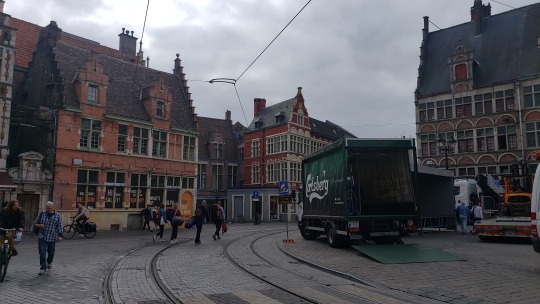
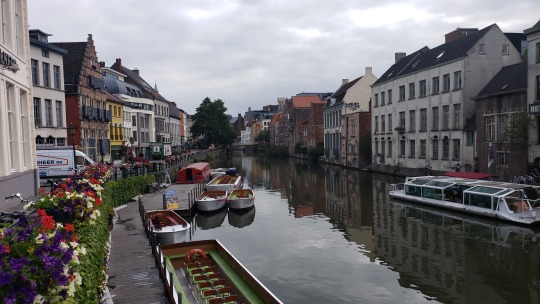
I got there so early that my first visitation site of the day wasn’t even open yet so I wandered the streets for a bit.
10am hit and Gravensteen finally opened it’s doors to visitors. The castle is such an interesting site to behold amongst the modern flairs of the city like the lightrail system and bustling tourist scene.

The medieval castle was built around 1180 and it remains one of the major landmarks of the city.
I’ve visited quite a few castles during my various travels but Gravensteen’s self guided audio tour has been one of my favorites. The stops are very clearly marked and each listening point is adorned with a cartoonish tapestry that corresponds to the story your narrator is telling.


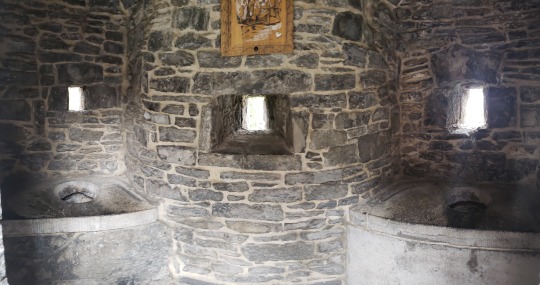

The castle offers a nice view of the city, plenty of quirky little spots you can discover for yourself, and a great story that teaches you about the history of the castle as well as Ghent as a whole.
After spending about 2 hours exploring the castle, I returned to the Leie riverfront for a boat tour of the city.
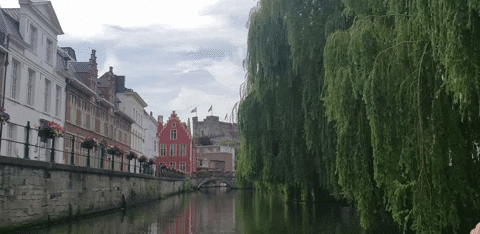
A wonderful way to get an overview of the city when you’re short on time.
After the boat tour I decided to grab lunch at the Restaurant Du Progres just across the river.



I’ve been dying to try Gentse Waterzooi. It’s a traditional stew that originated in Ghent with a creamy base that is hearty and delicious.
Once I was stuffed to the brim with cheese and creamy stew, I waddled my way over to St. Nicholas Church just around the corner.

The church is magnificent but quite small. More of a passing stop.
From there, I passed by another iconic landmark, the Het Belfort van Gent (Belfry & Cloth Hall). This is tallest of the belfries in Ghent and you can enter and climb to the top for a small fee. However I was limited on time and was happy with the view I saw in Gravensteen.

A quick walkby view of the Belfry & Cloth Hall. I wanted to climb up but was short on time and the weather wasn’t going to allow for the best views that day anyway.
I continued walking to my next official stop which was Saint Bavo’s Cathedral so I could view the famous Mystic Lamb Painting.

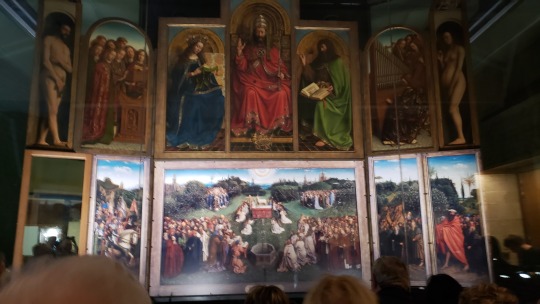
The alterpiece is tucked away in a dim side room. It’s a crowded experience to say the least. Tourists are shoulder to shoulder trying to find a spot to best view this piece. There’s a desk that offers an audioguide that explains each panel of this polyptych.
And with that visit, I finished up the Ghent portion of my trip and I hopped onto a train that took me to my second city stop of the day: Bruges. My first stop here was just a few steps away from the train station, Minnewater Lake. It was rather gloomy but it made for a very peaceful walk through the park.


The luscious greenery of this park was so lovely. I wish I could see it all under a bright blue sky.
My peaceful stroll continued onward toward Ten Wijingaerde. This is a preserved beguinage and though no Beguines live here anymore, it still functions as a convent for Benedictines.

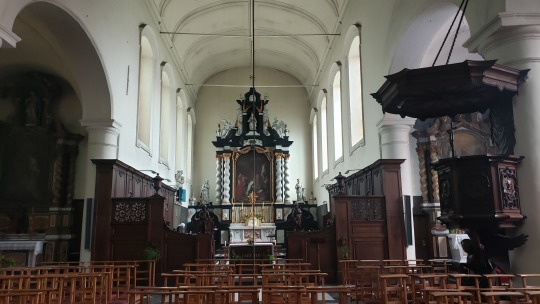
You are asked to be quiet while exploring the grounds. There were a few rooms open for viewing but for the most part the area seemed very still.
I continued walking into the Walplein. It’s a small cobblestone square dotted with a few shops and cafes.
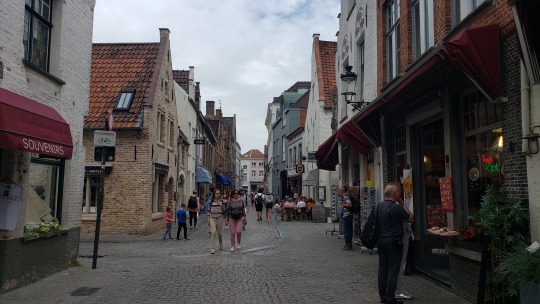
Eventually I end up on a path passing by the exterior of the Onze Lieve Vrouw Brugge (Church of our Lady, Bruges) which leads you right across the Bonifacius Bridge. It’s an inconspicuous little bridge but it has a lovely view of the canal. However it’s also full of tourists. From here I headed back to the riverfront and realized I had enough time left in the day to take a boat tour here as well. I went with the tour group Bootexcurseis Gruuthuse, though there are more than a few boat tour options available in the area.


The boat tour here was magical. The canal was overflowing with geese that would swim alongside the boats.
During the boat ride the tour guide mentioned several of the famous breweries we passed by and I wanted to try to pay one a visit so as soon as we docked I rushed over to Brouwerij Bourgogne Des Flandres. Unfortunately, tours of the brewery had already ended for the day but I walked around the premises a bit just to catch a glimpse of what I had missed.

At this point it felt appropriate to take another chocolate break at Chocolate de Julie on my way to The Market Square.

One last handful of delicious chocolate goodies.


The Market Square
Not much was going on and I had planned on going to dinner in the city but as I left a gentleman asked me to take his photo. He struck up a conversation and told me he was from the South of France and was here on holiday. We talked about our respective trips here and he insisted that while I was in town I needed to try some of the beer offerings. I was still a bit too full from my snack to go to dinner and he insisted he knew a nice beer shop so he led me to the shop where I picked up a beer. He talked about some windmills nearby and said they were just a short walk away and he eventually led me to a park with a nice view of Sint-Janshuismolen.

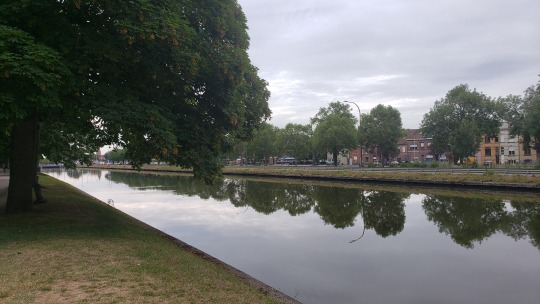
Enjoying a Gimbergen w/ a lovely view of the canal.
I did however cut the hangout short as the gentleman became increasingly touchy and let’s just say at this point it was clearly sexual harassment and I was too tired from my travels to deal with his behavior so I left him at the park and headed back into the city. Unfortunately the spot I had planned on going to for dinner was closed on the day I came by and I was too exhausted from what just happened to stay in the area so I hopped on the next train back to Brussels.
Once I had some time to recuperate at the hostel, I eventually got the energy to go find dinner. I didn’t want to wander too far so I grabbed a meal at Le 167, a modern French restaurant.

Seared scallops w/ whipped sweet potatoes & olive tapenade.
It was a tasty meal though not necessarily fitting of being my last meal here like I hoped but I felt good about how much I accomplished during my 3 day visit here so I went to bed happy if not still in a bit of shock from the hours before.
#Ghent#Bruges#Belgium#Travel#Europe#travel blog#traveling couch potato#explore page#food blog#explore#food pix#food porn#food#travel diary#diary#world traveler
6 notes
·
View notes
Text
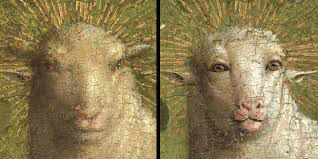
After three years and over two million doll hairs we can finally look upon the Ghent Alterpiece lamb the way he was meant to be seen and I hate it
9 notes
·
View notes
Text
Hitler and the Holy Grail
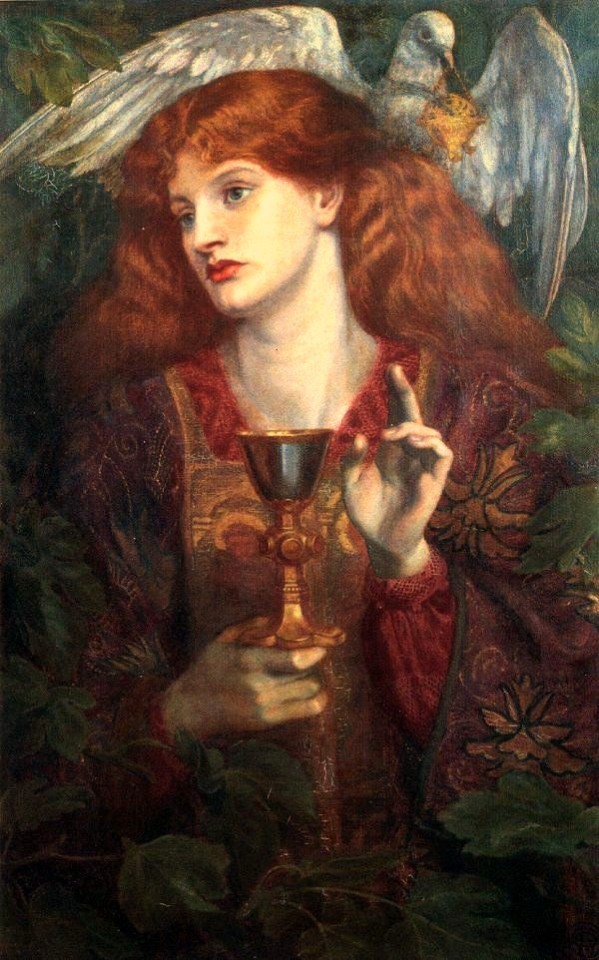
It is widely known that the Nazi party was obsessed with ancient history and the paranormal. They even went as far as to create an entire think tank dedicated to finding ancient relics and mounting expeditions all over the world in order to find ancient relics. The most coveted relics were related to Jesus Christ, such as the famous Ghent Altarpiece, the spear of Destiny and, above all, the Holy Grail.
The Ahnenerbe
The Ahnenerbe is the name of the think tank which was in effect from 1935 to the end of World War II in 1945. It was established by Hitler's right hand man, Heinrich Himmler who was in charge of the SS. The purpose of the Ahnerbe was primarily to connect the Nazi party with the mythologized history that Hitler and Himmler believed about the Aryan race and racial superiority.

The Symbol of the Ahnenerbe contains the magic runes of ancient Germanic lore. Himmler recruited a retired soldier turned occultist named Karl Wiligut who was practicing what he considered to be a reconstruction of ancient Aryan religion which he referred to as Irminism. Wiligut believed that there were ancient Germanic settlements in the Black Forest and mounted expeditions to ruins located deep within the woods. He also laid out a series of prophecies which lead to Himmler selecting Wewelsburg Castle as the headquarters for the paranormal wing of the SS.
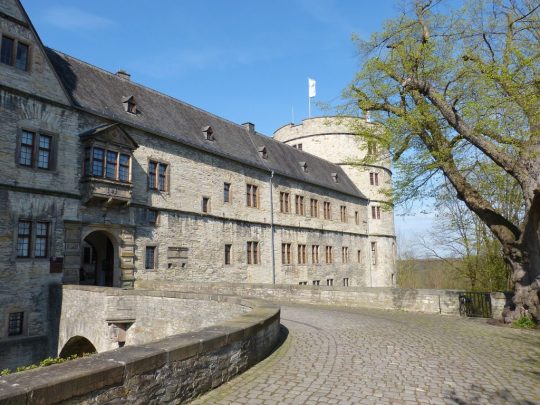
Wewelsburg became the headquarters of the paranormal division of the SS. Inside Wewelsburg, Himmler dedicated a large room to the Holy Grail with a large crystal as a placeholder.
Ariosophy
Ariosophy or "the wisdom of the Aryans" was an ideological system which flourished in Germany and Austria from the late 19th century into the 1930s. By blending Germanic Romanticism with the concurrent popularity of Theosophy, a few key thinkers formulated Ariosophy as an alternative to Christian history. The two leading thinkers in Ariosophic thought were Guido Von List and Jörg Lanz von Liebenfels. Both of these thinkers focused on resurrecting the Runic Magic used by ancient Germanic people in the area. Runic Magic is actually well documented at the time of the Roman Empire but differs from what we may think of Runic Magic in the Nazi era. According to Tacitus: Followers of Ariosophy believed that the magic of the runes was not in the way they were used as a form of divination by throwing them and reading the tea leaves, as it were. They were focused on intrinsic magic which they thought were part of the runes themselves. This was also true of important artifacts of history, which were seen as containing symbolic information which was magical in and of itself. They attach the highest importance to the taking of auspices and casting lots. Their usual procedure with the lot is simple. They cut off a branch from a nut-bearing tree and slice it into strips these they mark with different signs and throw them at random onto a white cloth. Then the state's priest, if it is an official consultation, or the father of the family, in a private one, offers prayer to the gods and looking up towards heaven picks up three strips, one at a time, and, according to which sign they have previously been marked with, makes his interpretation. If the lots forbid an undertaking, there is no deliberation that day about the matter in question. If they allow it, further confirmation is required by taking auspices.Germania - Tacitus
Irminism
Irminism is not an established religion. Rather, it is a reconstruction of what Nazi occultists believed to be true based on historical evidence they thought they had at the time. Often, they adapted ancient beliefs to fit better with Hitler's own ideology. According to ancient Roman sources, such as Tacitus, Germanic tribes of the North believed in a god named Irmin. Irmin was worshiped at an ancient site called an Irminsul which was a giant wooden pillar, presumably of ancient historical importance. Irminsuls were a type of altar that was made from a large wooden column. Widukind of Corvey describes an Irminsul he observed in 970AD after some Saxons erected a large Irminsul to commemorate their victory in a battle: When morning was come they set up an eagle at the eastern gate, and erecting an altar of victory they celebrated appropriate rites with all due solemnity, according to their ancestral superstition: to the one whom they venerate as their god of Victory they give the name of Mars, and the bodily characteristics of Hercules, imitating his physical proportion by means of wooden columns, and in the hierarchy of their gods he is the Sun, or as the Greeks call him, Apollo. From this fact the opinion of those men appears somewhat probable who hold that the Saxons were descended from the Greeks, because the Greeks call Mars Hirmin or Hermes, a word which we use even to this day, either for blame or praise, without knowing its meaning.Deeds of the Saxons - Widukind of Corvey Among ancient Germanic tribes, one particular Irminsul was more famous than all the others. Believed to be near modern day Heresburg, Germany, this Irminsul was seen as the center of ancient Saxon religion. As such, it was a target for military conquests and was ordered to be destroyed by Charlemagne in 772 AD. The destruction of the most famous Irminsul by Charlemagne. Wiligut was convinced that the true ancient religion of Irminism began in 12,500 BC and was supplanted by inferior religions later. He believed this so strongly that he frequently performed Irministic rites and ceremonies with high ranking SS officers in attendance. Wiligut chose Wewelsburg as the site of the headquarters for the SS's paranormal activities because of an ancient legend known as the Battle of the Birch tree about a Western army defeating an Eastern army in battle. He also chose the site because he believed it was a center of cultic energy based on reading ancient runes. In fact, Wiligut is still considered by many to have been an accomplished rune magician. Despite having common roots, Wiligut did not believe that Ariosophy was the real, true reconstruction of ancient Germanic religion and was key in persecuting followers of the rival ideology.
The Ghent Altarpiece
The Nazi quest for the Holy Grail begins with a perplexing art theft that continues to baffle scholars today. The Ghent Altarpiece, also known as the Adoration of the Mystic Lamb is the first major oil painting in Western Art. It was painted by the famous Belgian artist Jan van Eyck in the 1420s. It is actually a series of paintings which form a rich and bizarre symbolic history of Christianity from Adam and Eve on the outside panels to the sacrifice of the symbol of Christ, a lamb.
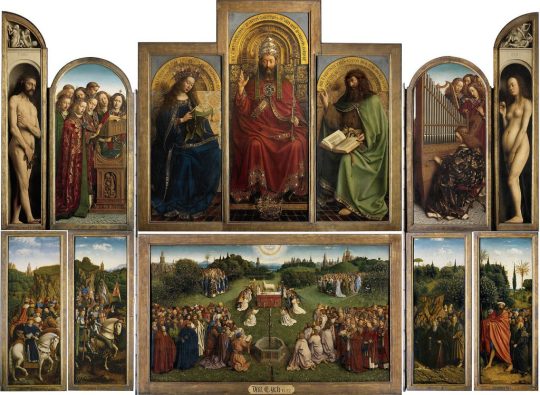
The Ghent Alterpiece was full of symbolism. Hitler and his second-in-command, Hermann Göring, coveted the Ghent Altarpiece above all other works of art. It was the primary objective of the Einsatzstab Reichsleiter Rosenberg or Reichsleiter Rosenberg Taskforce. In fact, when it was stolen, the two Nazi soldiers to find it raced to it to see who could grab it first. Göring actually stole the painting from Hitler again and then Hitler ordered the painting to be returned, where it was stored in salt mines until it was discovered after the war. Why was the Ghent Altarpiece so desired by Hitler? The piece of art itself did symbolize the sort of High Germanic Art that the Nazi's wanted to use re-enforce the myth of Aryan superiority. The other reason that Hitler wanted the piece so bad was because he thought it contained a symbolic map for finding the Arma Christi. After all, at the very center of the masterpiece, the lamb is bleeding into the Holy Grail.
The Arma Christi
The Arma Christi, which translates to the Weapons of Christ are also known as the Instruments of the Passion. They consist of the Cross, Crown of Thorns, the Spear of Destiny, the Holy Sponge (used to give Christ gall and vinegar when he was thirsty), the Nails of the Cross, the pillar where Jesus was flailed and the flail itself and, at least for the Nazis, the Holy Grail. The primary focus of Nazi expeditions was to recover the Holy Grail and any of the other Arma Christi which they could find.

This is the earliest depiction of the Arma Christi in Western Art from around 1157 AD. Hitler and the Ahnenerbe believed that acquiring these treasures would lead to supernatural performance by the German army. This included not only the Arma Christi but another of other famous historical objects.
The Expeditions
The first expedition by the Ahnenerbe was to find pagan sorcerers who may hide clues to past religions in their chants. Himmler directed an expedition to Kaleria in Finland in 1935 to study Finnish pagans who were still practicing at the time. He even took along an early sound recorder to record their chants. They also came across a witch by the name of Miron-Aku who claimed to have predicted their arrival.

Miron-Aku was a Finnish soothsayer/psychic and foretold the arrival of Himmler. Miron-Aku was a 93 year old witch who had been living in a small Finnish village. When the Nazis found her, she said: "You came to me in my sleep and wanted to take away my secrets. Since then I have been sick and will die soon. What do you want of me?" Through a series of rituals, she was said to have summoned ancient ancestors in front of them. Over the next 10 years, the Ahnenerbe mounted expeditions around the world including Sweden, Poland, Italy, France, Ukraine, Crimea, Tibet and even to Antarctica. Himmler's interest in the grail took him to look for the ancient cup in France, based on a line from Richard Wagner's Parsifal which stated the grail may be in the "the marvelous castle of Montsalvat in the Pyrenees". Wagner, a classical opera composer from the previous century, was very influential in Nazi thought. Wagner himself based the idea that the grail may be in France based on some lines from a medieval troubadour named Wolfram von Eschenbach. Although Himmler did not find the grail there, he did find that it was mentioned in ancient folk songs from the region.
In Conclusion
There is no evidence that the Nazis ever found the Holy Grail or the other Arma Christi. However, it was not for a lack of trying. Throughout the war, the pace of activity of the Ahnenerbe accelerated until the very end of the war. They did come across impressive archaeological treasures at nearly every turn but they interpreted them through a religious lens that often saw the artefacts in the context of a distorted belief that Aryans were responsible for all of the great developments in human history, often portraying such religious figures as Christ and Buddha as descendants of Aryans. This often blinded them to the true historical nature of their findings. After the war, allies found many of the treasures which were hidden in remote locations and returned them to museums around the world. Read the full article
7 notes
·
View notes
Text
@ everyone who is weirded out about the lamb’s face in that ghent alterpiece, it’s bc sheep have their eyes on the side of their face bc they’re a prey animal, meanwhile the alterpiece lamb has forward-facing eyes like a predator
3 notes
·
View notes
Photo


drape details from the Ghent Alterpiece, Jan Van Eyeck
14 notes
·
View notes
Text

REPITITION- Rene Magritte: Golconda

VARIETY- Joaquin Sorolla: Bacchante

RHYTHM- Robert Delaunay: Endless Rhythm

BALANCE- Jan Van Eyck: Panel of Ghent Alterpiece

EMPHASIS- Claude Monet: Impression, Sunrise

SCALE & PROPORTION- Pietro Perugino: Baptism of Christ

COMPOSITIONAL UNITY- Van Gogh: The Starry Night
0 notes